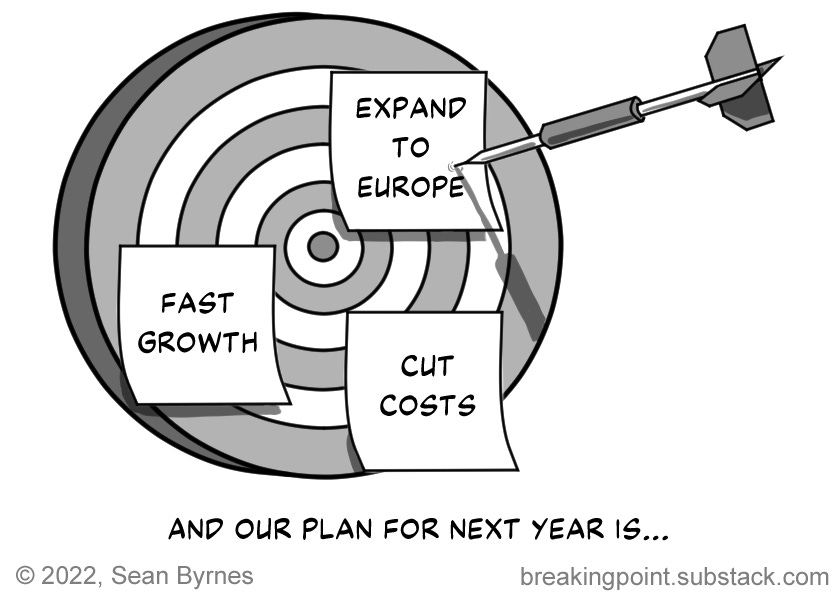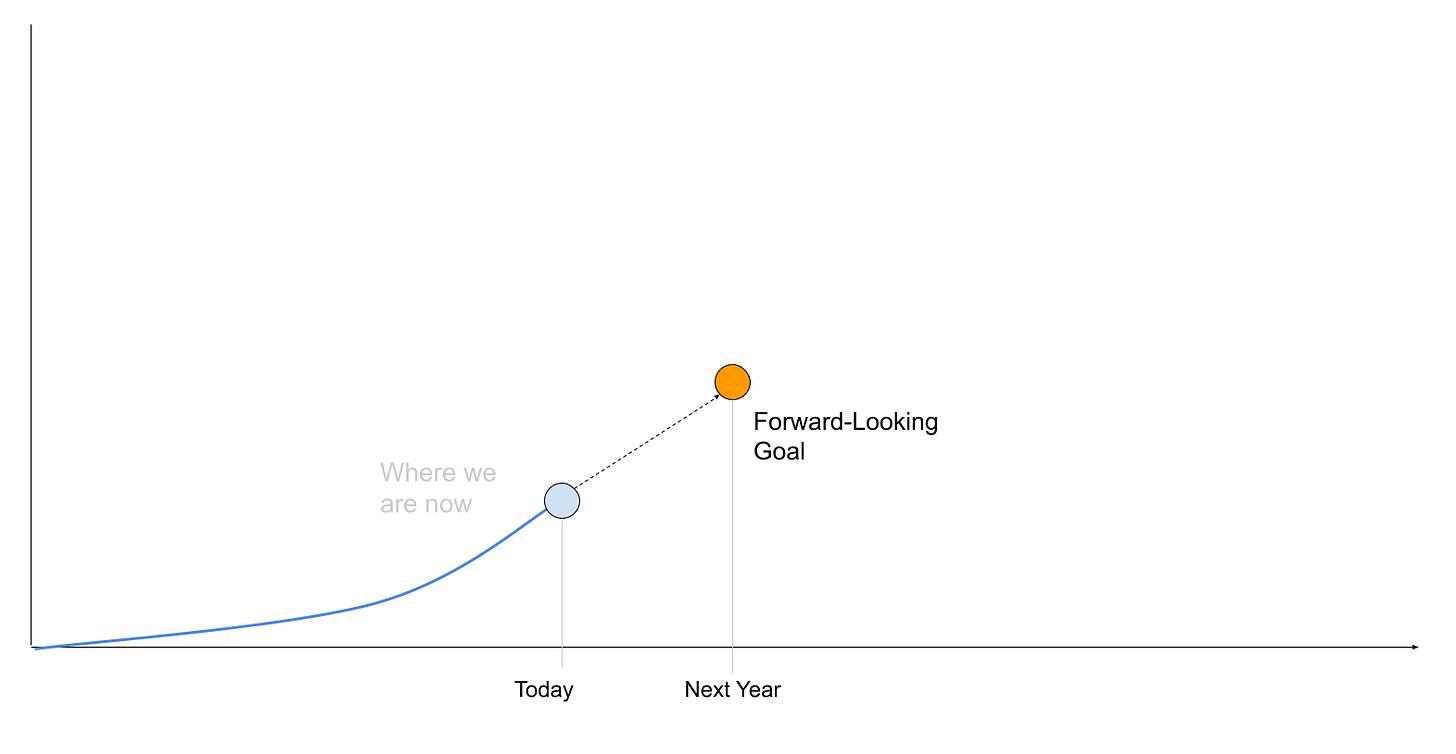

It’s annual planning time again, and most companies will go through the motions to produce an annual plan that they neither believe in nor follow. Why is it that annual plans are so dreaded and often so useless? There are a lot of reasons, but the most common is that the process used to create the plan is flawed. Many people learn a flawed planning process and then continue re-using it at future companies, perpetuating the bad habit.
To help you break the bad habit, we’ll cover a good annual planning process that will produce a useful plan that you believe in!
First, let’s discuss what we mean by an “annual plan”. A good annual plan has:
Some plans are one page long, and others are dozens. How long and detailed your plan is depends on your leadership style and the complexity of the business, but the good news is that this process works for all of them.
All plans start with goals, so how do we set those goals?
The first, and most important, part of your plan are the goals you set. Your goals are typically target values for your key metrics, such as:
Most companies struggle with goal setting because it’s so intimidating. If you have investors, board members or other partners you might think there are expectations on the goals you set - and you’d be right. At the same time, your team lives in fear of unrealistic goals which they have been subjected to at prior companies. All of these pressures can influence the goals you set, and not for the better.
Let’s approach goal setting in a more rational way, starting with…
Forward-Looking Goal Setting
The most common way to set goals is to extrapolate from where you are today into the future. Forward-looking goals are the easiest to make since you control all of the variables. That also makes them the most conservative goals, since your nature is to resist too much change too quickly. Everyone likes to be comfortable and Forward-Looking goals are usually comfortable.

Backward-Looking Goal Setting